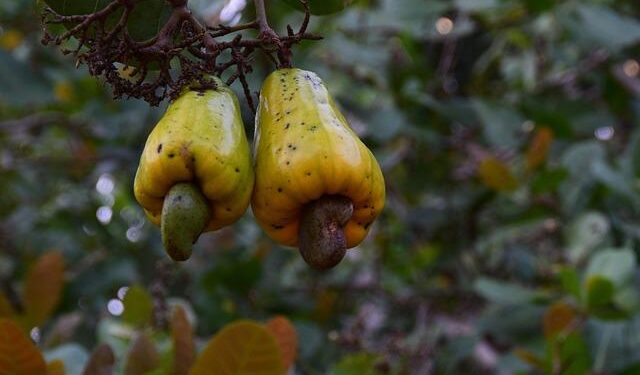Title: Amazon Rainforest Adapts to Prolonged Drought in Groundbreaking Research
In a significant development for climate science, researchers have observed that the Amazon rainforest is demonstrating remarkable resilience in the face of long-term experimental drought conditions. A study published in the esteemed journal Nature outlines how the world’s largest tropical rainforest is adjusting to shifting environmental stresses, challenging long-held assumptions about its vulnerability to climate change. This research not only highlights the adaptability of this vital ecosystem but also raises critical questions about the implications for global biodiversity and carbon storage. As scientists continue to grapple with the effects of changing weather patterns, these findings offer a glimmer of hope as well as a call to action for the preservation of one of the planet’s most crucial resources.
Amazon Rainforests Resilience Revealed in Long-Term Drought Study
A groundbreaking study has shed light on the adaptability of the Amazon rainforest in the face of prolonged drought conditions. Researchers conducting long-term experiments have discovered that the rainforest possesses significant resilience capabilities, allowing it to adjust to adverse environmental changes. This finding challenges previous assumptions that such ecosystems would inevitably succumb to the pressures of continuous drought. Instead, the data indicates that the rainforest can modify its physiological processes, thereby maintaining crucial biodiversity and ecosystem services.
The experimental drought revealed several key mechanisms through which the Amazon rainforest copes with water scarcity, including:
- Root adaptation: Trees developed deeper root systems to access subterranean water sources.
- Leaf adjustments: A reduction in leaf size and density minimized water loss through transpiration.
- Species resilience: Certain species exhibited quicker recovery times after drought events, enhancing overall forest health.
These findings not only provide insight into the complex responses of the Amazon rainforest to climate change, but they also underscore the importance of preserving this vital ecosystem. As scientists unravel the intricate web of interactions within the rainforest, it becomes evident that proactive conservation efforts are essential to help the Amazon withstand future environmental challenges.
Impact of Prolonged Drought on Biodiversity and Ecosystem Dynamics
Prolonged drought conditions pose a significant threat to biodiversity in the Amazon rainforest, altering the delicate balance of species and their habitats. As vital water sources diminish, numerous flora and fauna struggle to adapt, resulting in a steep decline in species diversity. This shift can lead to a cascade of ecological consequences, affecting everything from nutrient cycling to predator-prey relationships. The reduction in plant cover not only impacts the myriad of animals that rely on those plants for sustenance but also disrupts the intricate web of interactions that sustain the ecosystem.
Research highlights key vulnerabilities in various species. The following points illustrate some of the observed impacts of drought on biodiversity:
- Increased Mortality Rates: Trees and plants that cannot access sufficient water face death, leading to loss of critical habitats.
- Altered Animal Behavior: Species are forced to migrate to find food and moisture, potentially leading to increased competition in new areas.
- Reduced Reproductive Success: Drought conditions can diminish the reproductive success of numerous species, further threatening populations already at risk.
The effects of prolonged drought also foster shifts in ecosystem dynamics, as lower biodiversity can empower certain resilient species to dominate landscapes, diminishing ecosystem functionality. This shift towards a less diverse ecosystem may impair its ability to provide essential services such as carbon storage, soil fertility, and water filtration. The long-term implications of these changes remain a pressing concern for scientists monitoring the resilience of the Amazon rainforest.
Strategies for Conservation and Sustainable Management in a Changing Climate
In light of recent findings from long-term drought experiments in the Amazon rainforest, effective strategies for conservation and sustainable management are more critical than ever. Researchers have observed that despite prolonged periods of reduced rainfall, the rainforest exhibits remarkable resilience. To enhance this resilience, it is essential to adopt the following approaches:
- Restoration Initiatives: Prioritize reforestation and afforestation projects, focusing on native species to foster biodiversity.
- Integrated Land Use: Implement agroforestry practices that harmonize agriculture with ecosystem conservation, thereby supporting both food production and environmental health.
- Community Engagement: Empower local communities through education and involvement in conservation endeavors, ensuring that their traditional knowledge is utilized in management strategies.
- Monitoring and Research: Invest in continuous ecological monitoring and scientific research to better understand ecosystem responses to climate change.
Moreover, collaboration between governments, NGOs, and the private sector can further amplify these efforts. A focused framework for sustainable practices can be developed using a dynamic model that factors in climate variability. The following table outlines potential collaboration opportunities:
| Stakeholder | Role | Focus Area |
|---|---|---|
| Governments | Policy Development | Regulatory Frameworks |
| NGOs | Community Outreach | Biodiversity Conservation |
| Private Sector | Investment | Sustainable Practices |
In Conclusion
the findings from the long-term experimental drought in the Amazon rainforest present a complex portrait of ecological resilience amid climate stressors. As researchers continue to monitor the forest’s response, it becomes increasingly clear that while some areas may adapt to changing conditions, the overall health of this vital ecosystem remains precarious. The studies emphasize the urgent need for continued research and conservation efforts as the implications of climate change ripple through one of the planet’s most important carbon sinks. With the Amazon’s future hanging in the balance, understanding its adaptive mechanisms could be key to safeguarding its biodiversity and the myriad benefits it provides to the global community. As we move forward, the lessons learned from this research will be crucial in informing policies aimed at preserving one of Earth’s most irreplaceable treasures.































